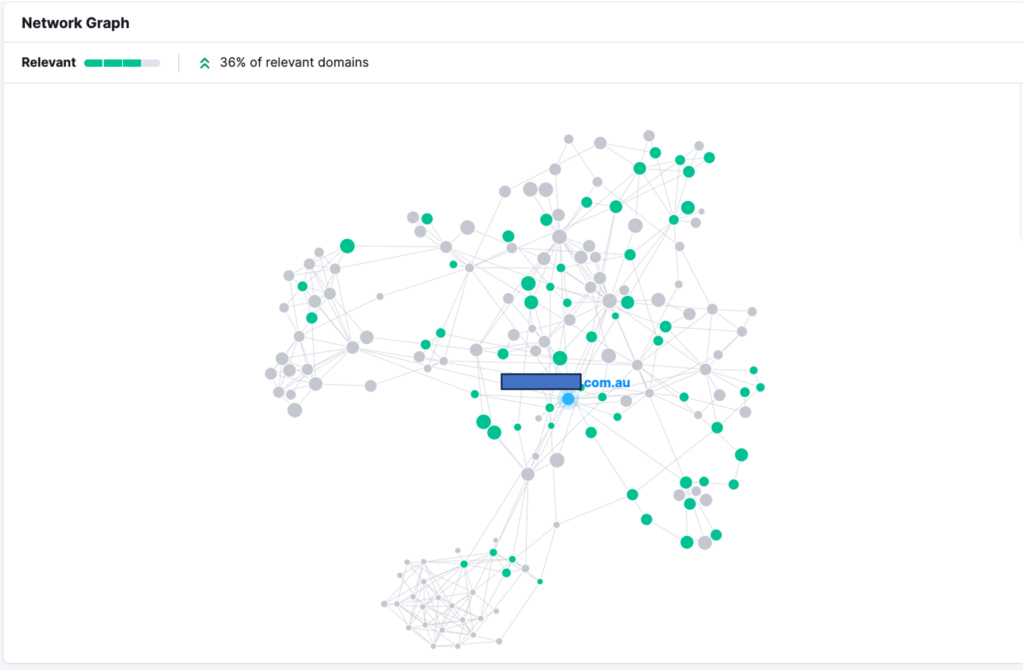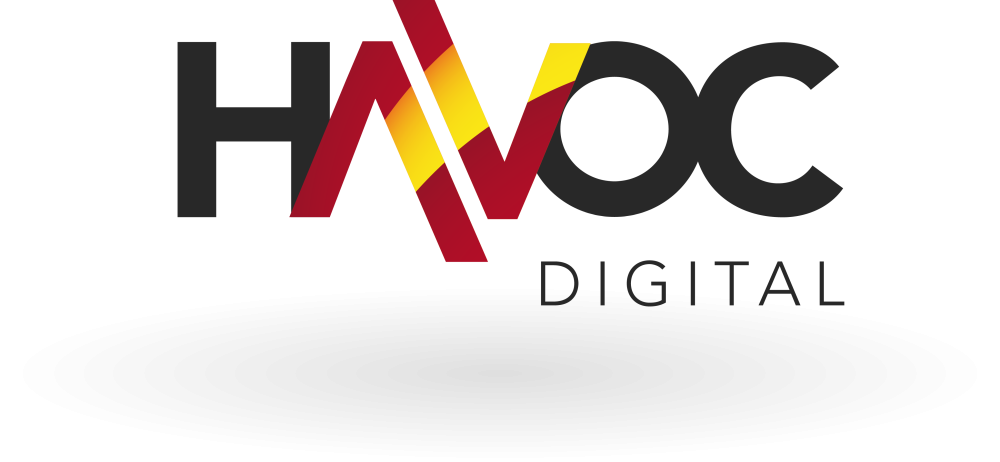Exploiting Corporate Intrigue: The Power of Satellite Websites in SEO Link Building
The Power of Corporate Satellite Websites in SEO Link Building
In the world of corporate digital marketing, link building plays a crucial role in enhancing a website’s visibility and authority.
This case study delves into the intriguing world of corporate dominance within the Flight, Accommodation & Travel sector in Australia.
While specific names and identities have been omitted to maintain confidentiality- Havoc Digital remains obligated by Non-Disclosure Agreements as well as the commercial reality that we continue to work for the subject of this case study since 2012.
However, we will explore the practice of creating satellite websites and their impact on SEO benefits and Google’s algorithmic response.
Additionally, we will define and provide examples of link farms and link wheels to avoid, and highlight how small and medium enterprises (SMEs) could compete and leverage some of these strategies.

1. The Significance of Backlinks in SEO:
Backlinks have long been recognised as a vital factor in search engine optimisation. Google, in particular, analyses the number and quality of backlinks pointing to a website to determine its authority and relevance for specific search queries.
Obtaining high-quality backlinks from reputable sources signals to Google that a website is trustworthy and deserves higher visibility in search results.
2. The Rise of Satellite Websites:
To overcome the logistical challenges of creating, managing, and publishing vast amounts of relevant content via individually owned and administered websites, corporations began deploying their own satellite websites.

Initially, these websites had poor aesthetics and low-quality journalism.
However, over time, they evolved into industry award-winning sites, gaining substantial traffic volumes within the Flight, Travel, Accommodation, and Holiday Vacation sectors.
These matured satellite sites not only provide backlinks but also generated additional revenue streams through advertising and partnerships.
3. SEO Benefits of Satellite Websites:
Creating satellite websites offers several SEO benefits, including:
a) Increased Backlink Opportunities: Corporate-owned satellite websites provide a platform to generate a multitude of backlinks pointing to the main business website.
Each backlink enhances the website’s authority and improves its search engine rankings.

b) Diversified Link Profile: By leveraging satellite websites, corporations can build a diverse link profile.
This diversity is essential as it demonstrates to search engines that the website is receiving backlinks from a variety of relevant sources, which improves its overall SEO performance.

c) Targeted Keyword Optimisation: Satellite websites can be strategically designed to target specific keywords and search queries, allowing corporations to dominate multiple search engine results pages (SERPs) and increase their online visibility.

4. Google’s Algorithmic Response:
Google’s algorithm evolves continuously to provide users with the most relevant and authoritative search results.
While satellite websites can yield short-term benefits, Google actively combats manipulative practices to maintain the integrity of its search engine.
Therefore, it’s crucial to follow ethical guidelines and focus on quality rather than quantity when implementing corporate satellite website strategies.
Known cases of corporate satellite websites being used as a part of digital marketing strategies. However, it’s important to note that the specifics of these cases may be subject to confidentiality agreements and non-disclosure agreements, limiting the availability of detailed information.
In 2013, Google penalised Interflora for what it deemed as a violation of its guidelines on manipulative link schemes.
Interflora, a well-known flower delivery service, was involved in a controversy regarding its use of satellite websites to boost its online visibility and rankings.
The company had a network of hundreds of websites that were used to generate backlinks to its main website.
The company experienced a significant drop in search engine rankings and visibility as a result.
The case highlighted the risks associated with using satellite websites solely for the purpose of generating backlinks without providing substantial value to users.
It’s worth noting that while there have been instances of companies utilising satellite websites, the practice has evolved over time.
Today, businesses and digital marketers focus more on creating valuable and user-centric content on satellite websites, ensuring that they serve as independent entities with their own audience and purpose, rather than simply existing for backlink generation.
Due to the confidential nature of many corporate digital marketing strategies and the continuous evolution of the industry, specific examples of corporate satellite websites may not always be publicly available.
However, the concept of using satellite websites as part of a comprehensive corporate digital marketing strategy remains relevant and can provide benefits when implemented strategically and ethically.
5. Link Farms and Link Wheels:
a) Link Farms: Link farms are networks of websites created solely for the purpose of generating backlinks.
These sites often have low-quality content and exist solely to manipulate search engine rankings.
Link farms violate Google’s guidelines and can lead to severe penalties, including the de-indexing of websites involved.
While we can provide a hypothetical example of a link farm, it’s important to note that link farms are considered black hat SEO techniques and are strongly discouraged. Engaging in link farming practices can lead to severe penalties from search engines, including the de-indexing of websites involved. It’s always recommended to follow ethical SEO practices and focus on quality content and natural link-building.
A hypothetical example of a link farm:
Let’s say we have a network of 20 websites, all owned or controlled by the same entity.
The primary purpose of this network is to manipulate search engine rankings by generating a large number of backlinks within the network.
Each website in the link farm has numerous links pointing to the other websites within the network, creating an interconnected web of backlinks.
Here’s a simplified representation of the link farm structure:
Website A: This is the main website within the link farm network.
Website B: Website B has multiple links pointing to Website A and other websites within the link farm.
Website C: Similar to Website B, Website C also has multiple links pointing to Website A and other websites within the link farm.
…
Website T: The final website in the link farm network, Website T, also links to Website A and other websites within the network.
The purpose of the link farm is to create an artificial appearance of popularity and authority by generating a high volume of backlinks.
However, search engines like Google have become increasingly sophisticated in detecting and penalising link farms.
If identified, the consequences can be severe, leading to a significant loss of organic visibility and rankings for all websites involved.
It’s crucial to emphasise that link farming is against ethical SEO guidelines.
Instead, it’s best to focus on organic link building strategies, such as creating high-quality content, fostering genuine relationships with other websites, and earning backlinks through valuable and relevant contributions to your industry or niche.
b) Link Wheels: Link wheels are a more sophisticated version of link farms.
They involve a circular structure where multiple websites link to each other, creating a network of interconnected backlinks.
Link wheels attempt to manipulate search engine rankings but can be easily detected by Google’s algorithm.
Implementing link wheels can result in penalties and a significant loss of organic visibility.
Example of a link wheel:
Let’s say we have four websites: A, B, C, and D. The goal is to create a link wheel to manipulate search engine rankings.
The structure of the link wheel would be as follows:
1. Website A: This is the main website that we want to boost in search engine rankings.
2. Website B: Website B creates a backlink to Website A, providing a valuable link from a different domain.
3. Website C: Website C creates a backlink to Website B, further boosting the authority of Website B.
4. Website D: Lastly, Website D creates a backlink to Website C, completing the link wheel.
Now, the link wheel is formed, with each website linking to another in a circular fashion.
If identified, websites involved in link wheel schemes can face severe penalties, including a loss of organic visibility and rankings.
It’s crucial to remember that ethical SEO practices focus on providing valuable content and acquiring natural, high-quality backlinks from reputable sources.
Building long-term authority and credibility through organic means is the key to sustainable SEO success.
Conclusion:
Satellite websites have proven to be a powerful tool for corporations looking to dominate the Flight, Accommodation & Travel sectors in Australia.
While the SEO benefits are evident, it is crucial to approach this strategy ethically and focus on providing value to users.
Google’s algorithm is designed to identify manipulative practices, such as link farms and link wheels, and penalise websites engaging in such activities.
As small and medium enterprises (SMEs), it is essential to learn from these corporate strategies, focusing on quality content, targeted backlink acquisition, and ethical SEO practices to compete effectively in the digital landscape







